CATEGORY GROWTH INSPIRATION
The pressure is always on to find sources of category growth that will grow the TOTAL category, not just our brand at the expense of others whilst the category stands still.
It doesn’t matter where we work: saturated, new, commodity or premium categories – concentrated, traditional trade, online or in store channels – profitable category growth is the final measure of success for our customers and ourselves.
Where is your category growth coming from?
There are many growth models we can use. The Ansoff Matrix (first published in Harvard Business Review in 1957) and the four quadrant market growth map is still one of our favourite ‘thinking tools’. The hack is to think about the Ansoff Matrix from a CPG category growth perspective – remembering we exist to serve our customer’s shoppers:

- The Ansoff matrix maps existing/new markets and existing/ new products
- For “products” we can substitute “category”
- For “markets” we can substitute our customer’s “shoppers”
We’ve browsed our local shops to see this in action, so let’s dive in!
______
MARKET PENETRATION : SELL EXISTING CATEGORIES TO EXISTING SHOPPERS
Market penetration means increasing sales of our existing category to our customer’s existing shoppers who already shop the category. This is what we probably spend 80% of our time doing when working with CPG categories. As a brand owner we have three key options to drive category growth with our existing category shoppers:
Grow by increasing purchase frequency
We increase purchase frequency if our customer’s shoppers to buy more frequently than normal -for example, by bringing forward a repurchase. An example of this is dog joint care capsule brand YuMove which offers better value and convenience to dog owners who are willing to sign up for regular subscription and delivery – thereby almost certainly buying (and consuming) more frequently than if the owner had to remember to replenish on the next shopping trip:
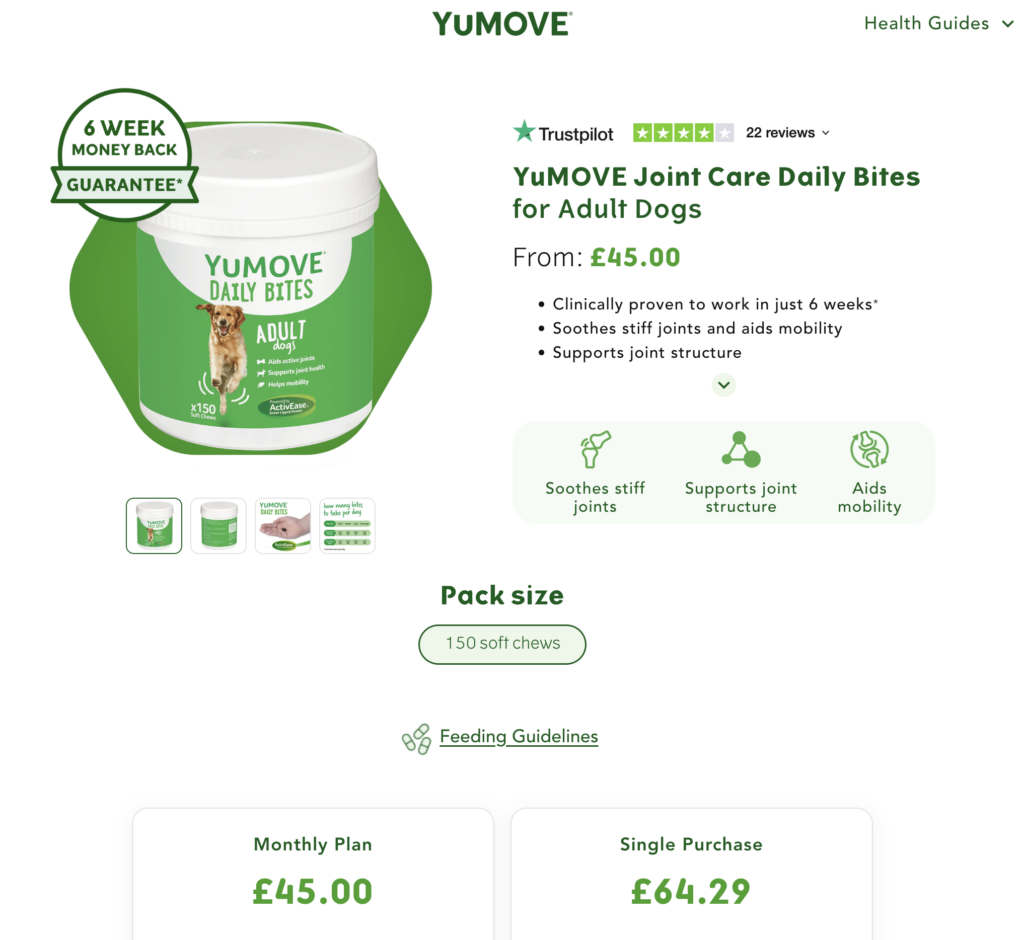
Grow by increasing average weight of purchase
We increase average weight of purchase if our customer’s shoppers buy more than normal for example, buying a larger pack size. An example is a a pack of three Jaffa Cake biscuits which Tesco shoppers can buy instead of a single pack:
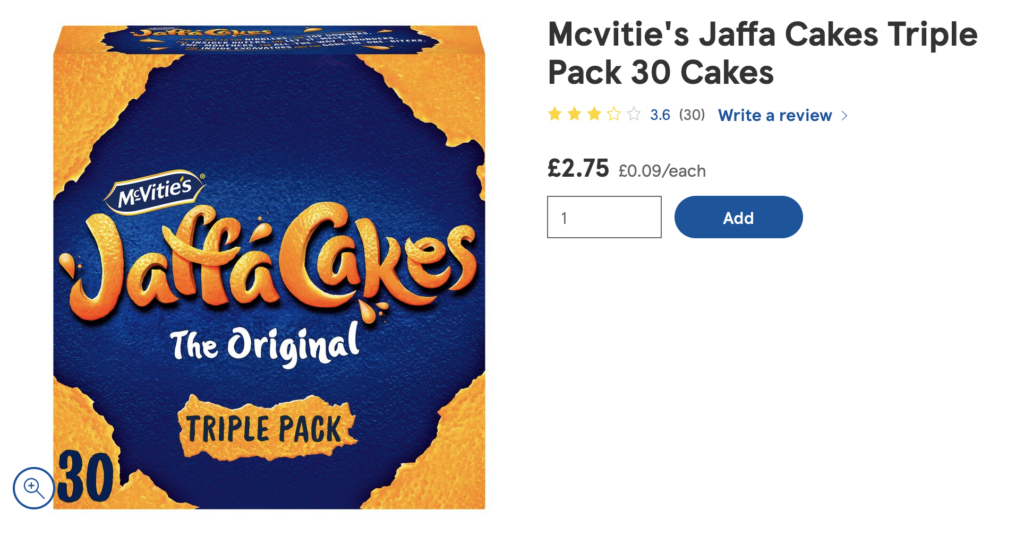
Grow by increasing average purchase value
We increase average purchase value if our customer’s shoppers spend more than normal – for example, by trading up what they buy. An example of this is a premium option for sausage roll shoppers in Tesco who may wish to buy a more expensive product for it’s ingredients or taste benefits:
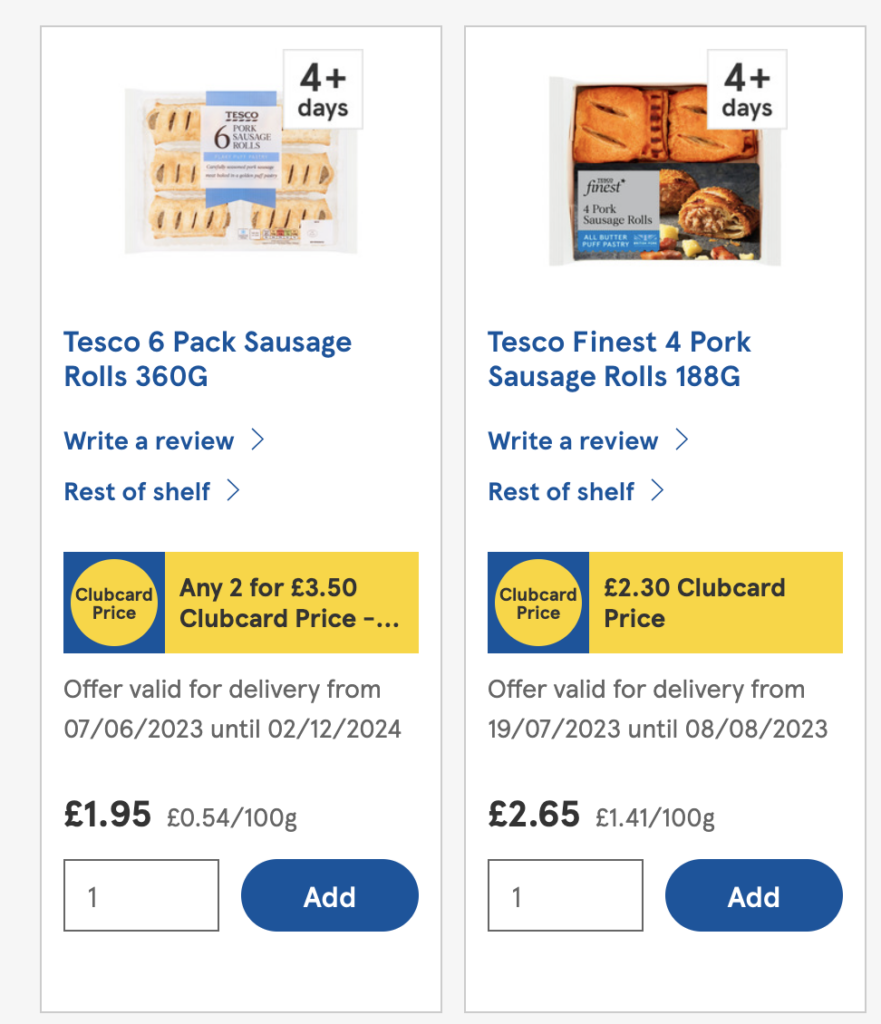
______
PRODUCT DEVELOPMENT : SELL NEW CATEGORIES TO EXISTING SHOPPERS
Product development means selling a new category or brand to our customer’s existing shoppers. Our customers are always looking for insight led innovation, so when we have a new category or unique brand which will drive organic growth, everybody wins – most especially our customer’s shoppers. There is one strategic objective:
Grow by increasing shopper penetration
We increase shopper penetration if more of our customer’s shoppers shop the category because they make a trial purchase. Our job is to lower the risk of the trial purchase because the offer is compelling, so that we don’t rely on price to get shoppers to buy. An example is Waitrose promoting a new range of flavoured greek yoghurts; Tims Dairy, which may encourage shoppers who otherwise might not have purchased a plain flavour greek yoghurt, to try one of the flavours on offer in this new range:
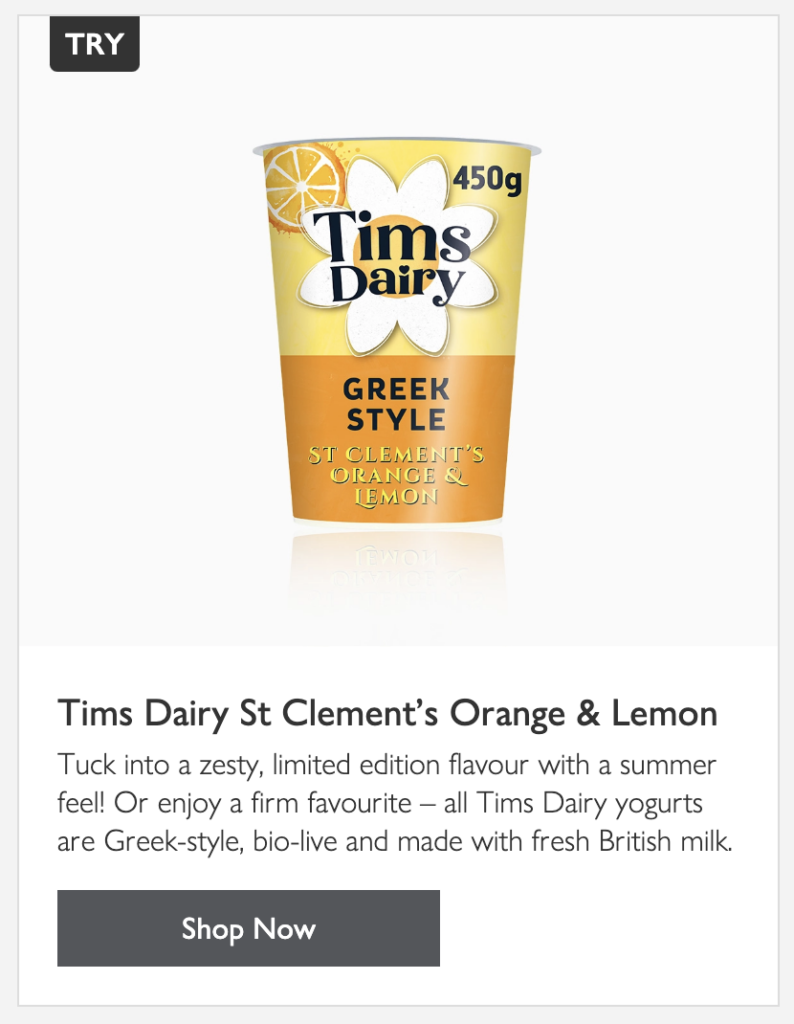
______
MARKET DEVELOPMENT : SELL EXISTING CATEGORIES TO NEW SHOPPERS
Market development means we sell our existing category to new customer shoppers. There are two types of new customer shoppers: this could be shoppers who don’t shop in our customer and shoppers who do shop in our customer but don’t shop our category. The strategic objective is:
Grow by increasing shopper penetration
Shoppers who don’t shop in our customer
We increase shopper penetration if we increase the number of shoppers in our customers stores by attracting new category shoppers. An example is this advert communicating that Krispy Creme is available to buy in Tesco stores which may attract existing Krispy Creme donut shoppers who do not currently shop in Tesco:
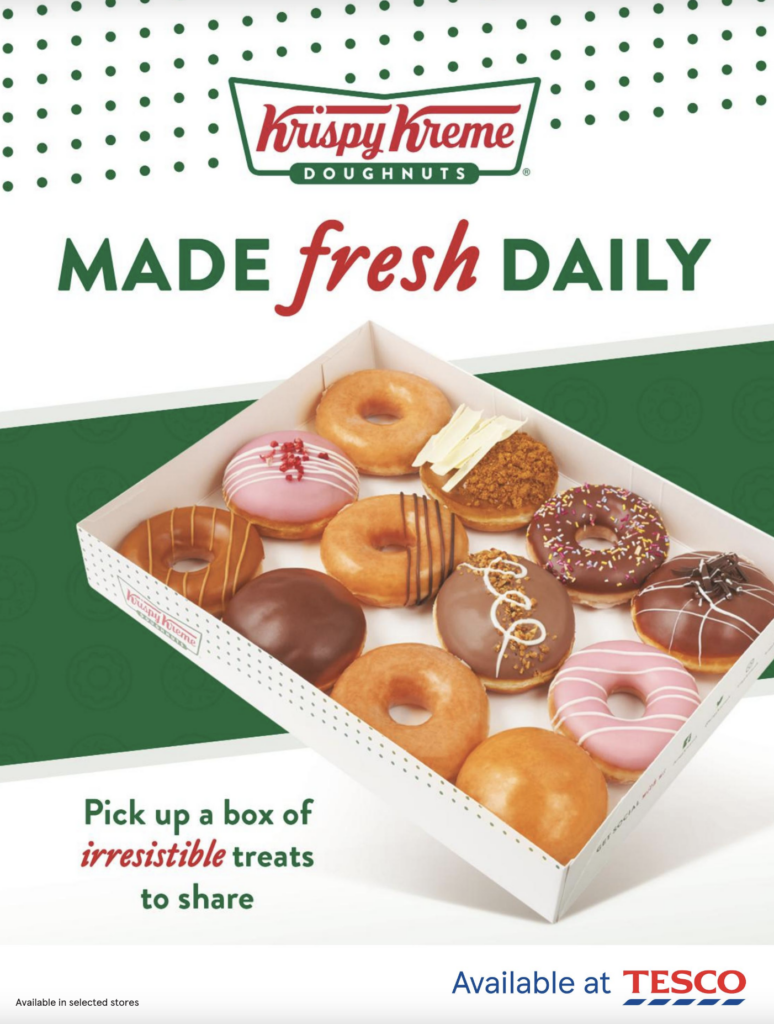
Shoppers who shop in our customer but don’t shop the category
We increase shopper penetration if we encourage shoppers who never buy our category to try the category. So, we need to attract them to the category aisle in store, or to the category web page online. An example of this is a Tesco Summer cross category communication – which prompts shoppers buying a specific Summer seasonal category to consider others that they may not have considered or ever purchased:
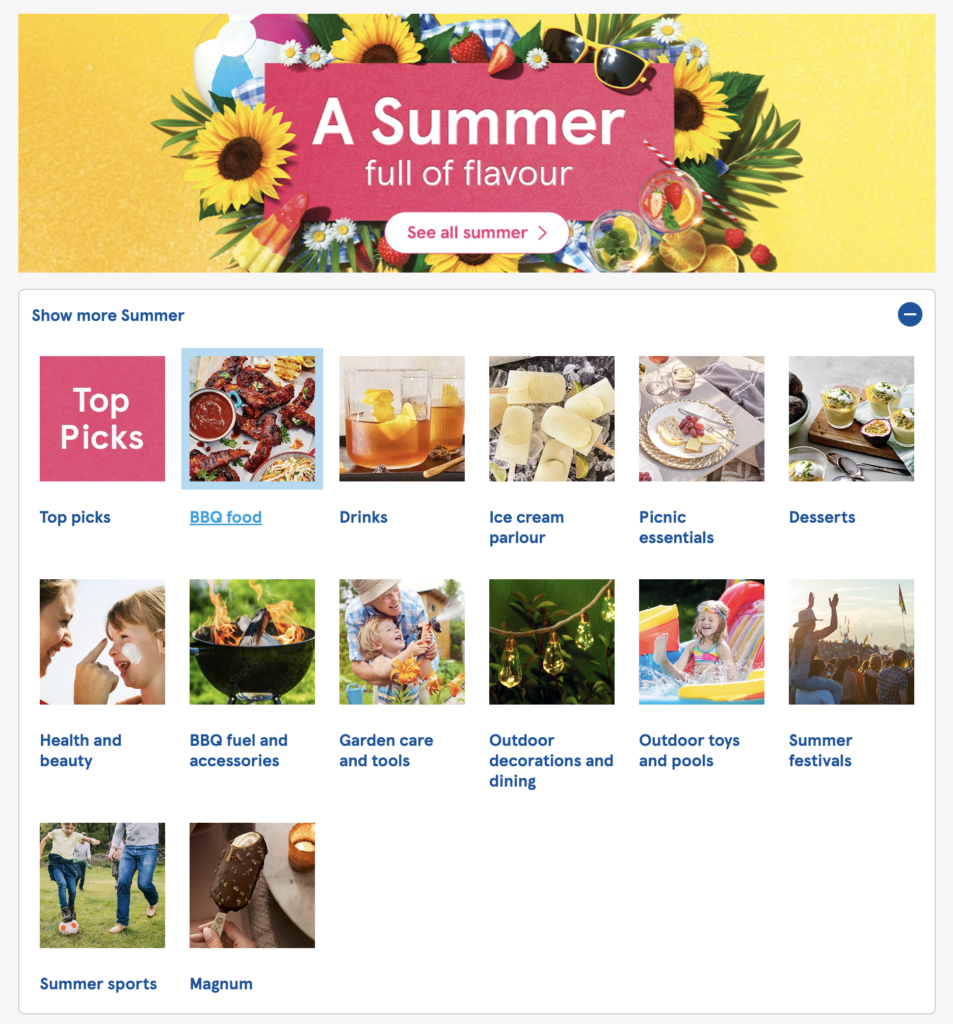
______
DIVERSIFICATION : SELL NEW CATEGORIES TO NEW SHOPPERS
Diversification means we sell a new category to new customer shoppers. This is the holy grail of marketing – coming up with new unique categories to meet the needs of new consumers. Again, there are two types of new customer shoppers: shoppers who don’t shop in our customer and shoppers who do shop in our customer. Depending on the category and which represents the biggest opportunity, the strategic objective is:
Grow by increasing shopper penetration
Shoppers who don’t shop in our customer
We increase shopper penetration if we increase the number of shoppers in our customers stores since the customer becomes a destination for new category shoppers. An example from Eisberg wines who launched a new range of alcohol free wines, a new and growing category – encourage shoppers to the retailers who stock the new range:

Shoppers who shop in our customer
We increase shopper penetration if new shoppers in our customer try a new category. So we think of ways to promote the category in store or online, to make it more visible. In this example, a range of frozen stuffed cookies called Dough Chi announce a pop up shop in Whole Foods, giving current Whole Foods shoppers a chance to try and buy this new frozen yoghurt bite size dessert category:
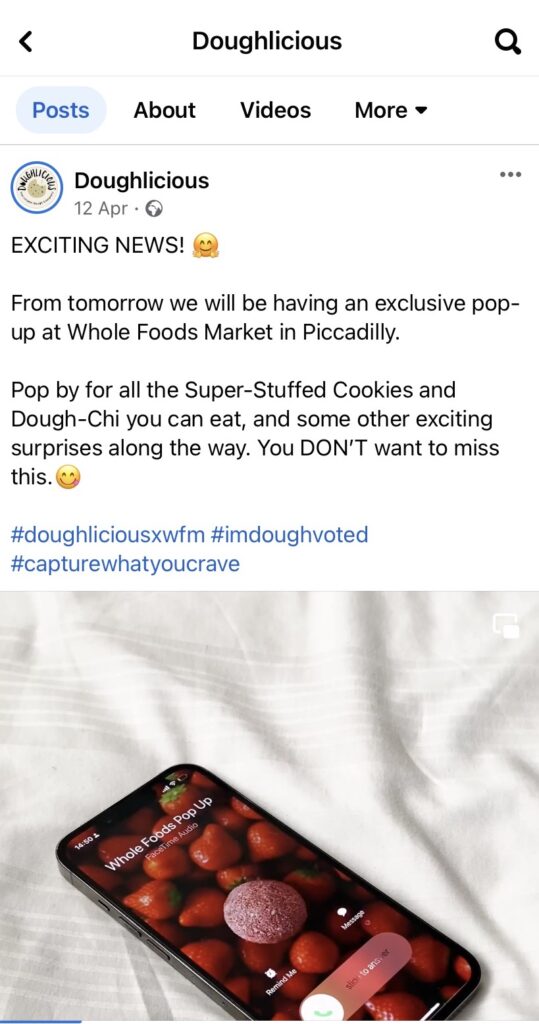
We’ve shared a few examples to bring the Ansoff Matrix to life – it’s a great thinking tool to help us focus 80% of our time plan what we want to achieve, and then 20% on the strategies and tactics we can deploy to make the most of category growth opportunities. In the Category Growth Inspiration series of articles we will focus on these, so we can have fun and become category growth hackers!